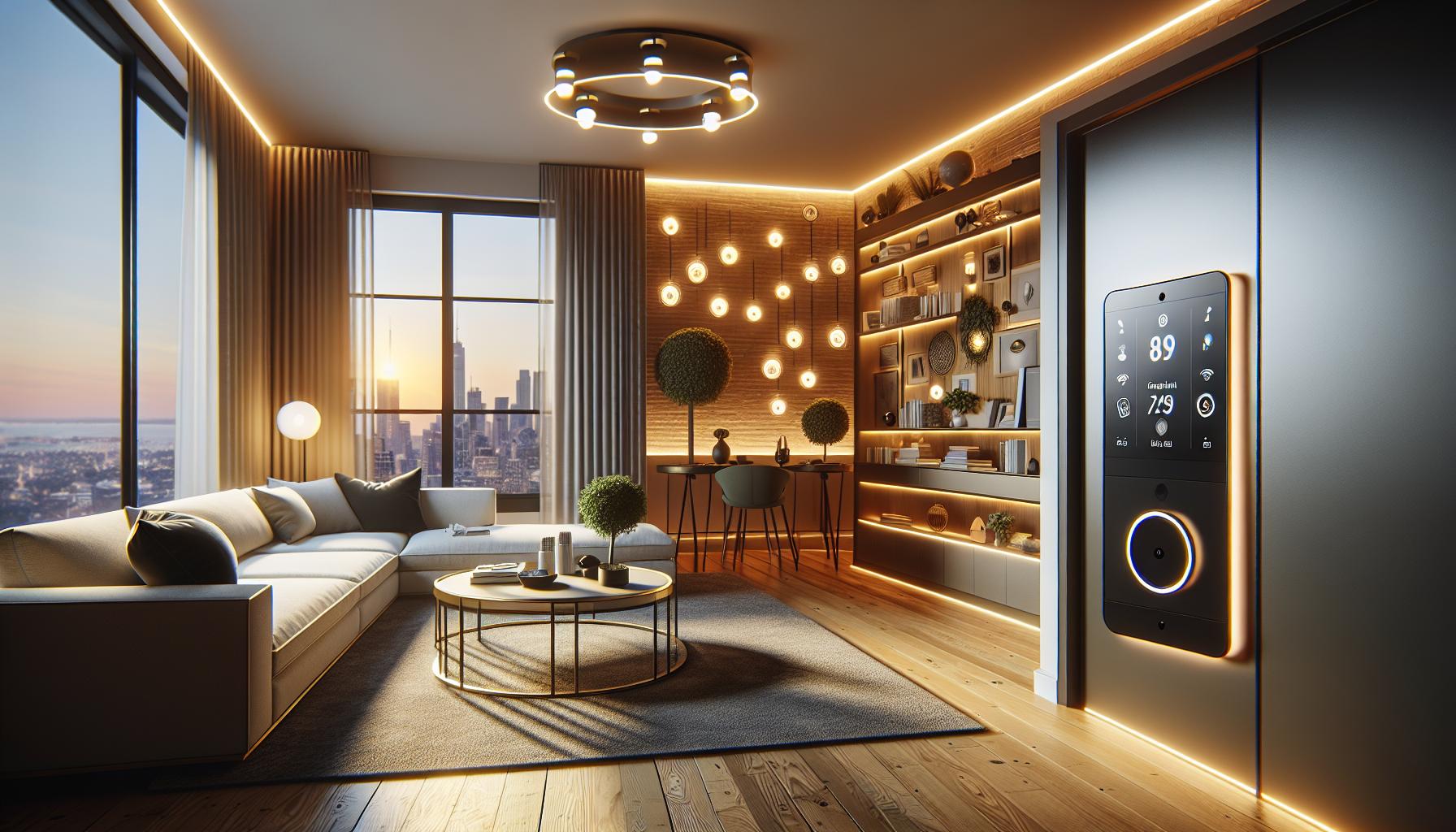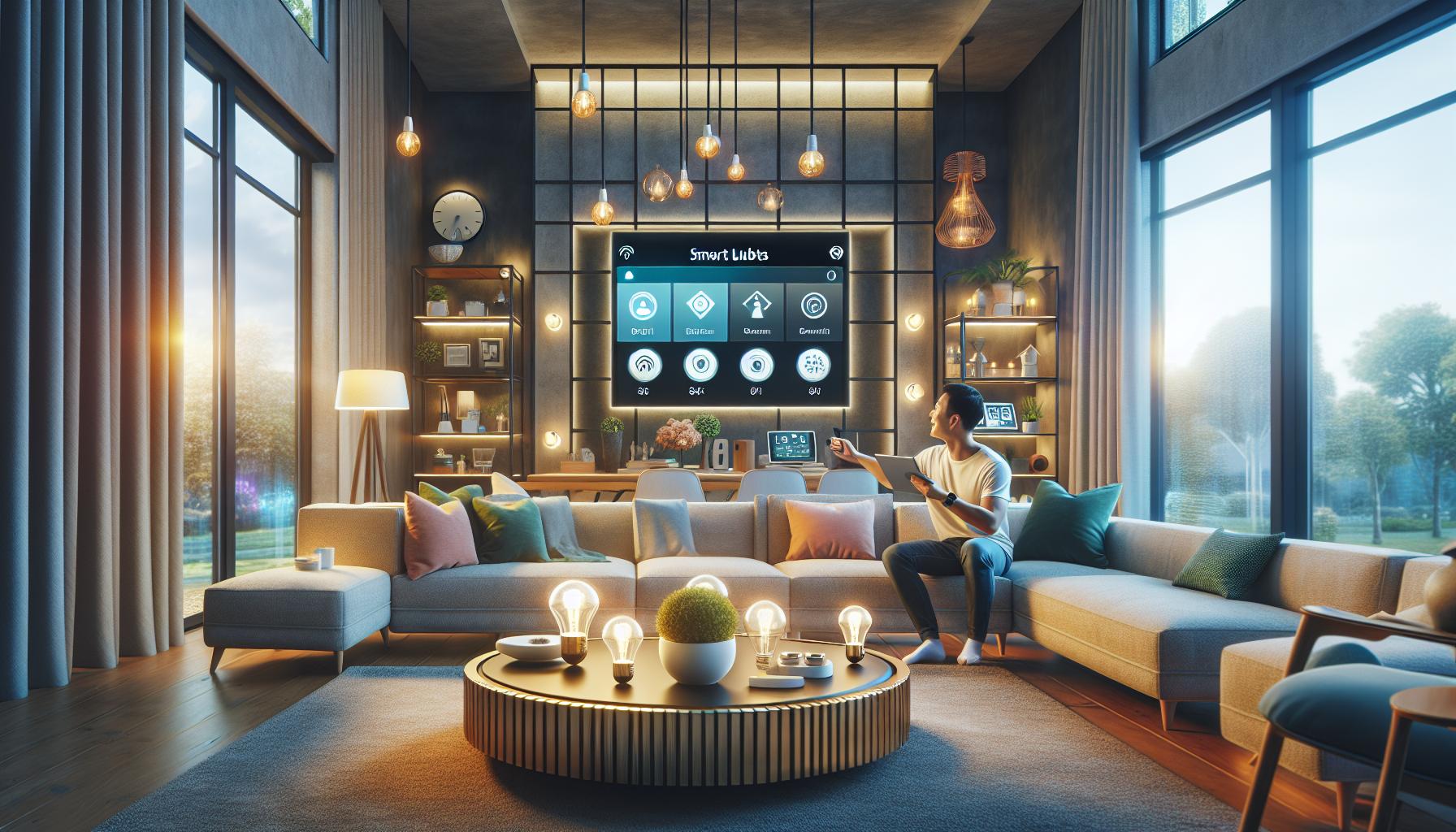Key Takeaways
- Smart Home Revolution: Modern smart home technology enhances efficiency, convenience, and security, transforming everyday living into a streamlined experience.
- Key Innovations: Popular smart devices include smart lighting systems, thermostats, security systems, appliances, and voice assistants, each offering unique functionalities for improved user experience.
- Energy Efficiency: Smart devices like thermostats and energy monitoring systems contribute to significant energy savings by optimizing use based on occupancy and habits.
- Centralized Control: Home automation systems and voice assistants enable seamless management of various devices, allowing homeowners to create personalized routines and streamline daily tasks.
- Privacy and Compatibility: Address potential privacy concerns and ensure compatibility between devices to enhance the smart home experience and maximize functionality.
- Sustainable Living: Implementing smart home technologies not only boosts convenience but also encourages a more sustainable lifestyle by promoting energy conservation.
In today’s fast-paced world, smart homes are no longer just a futuristic dream; they’re becoming a reality for many. With the rapid advancement of technology, homeowners now have access to innovative solutions that enhance convenience, security, and energy efficiency. From intelligent lighting systems to advanced security cameras, modern smart home ideas are transforming the way people live.
Imagine controlling every aspect of your home with just a tap on your smartphone or a simple voice command. This article explores the latest trends and ideas in smart home technology, showcasing how these advancements can simplify daily routines and elevate living spaces. Embracing these ideas not only adds sophistication to a home but also contributes to a more sustainable lifestyle.
Modern Smart Home Ideas
Modern smart home ideas leverage advanced technology to create efficient, connected living environments. These concepts prioritize convenience and user-friendliness while promoting energy conservation.
- Smart Lighting: Smart bulbs or lighting systems enable users to control brightness and color via smartphone apps or voice commands. Automated scheduling and integration with motion sensors enhance energy efficiency.
- Smart Thermostats: Smart thermostats learn user preferences and adjust heating and cooling automatically. They help reduce energy bills by optimizing temperature settings based on occupancy and usage patterns.
- Home Security Systems: Advanced security systems include cameras, motion detectors, and smart locks. Homeowners can monitor their property in real-time and receive alerts about unusual activities directly on their devices.
- Smart Appliances: Refrigerators, ovens, and washing machines equipped with smart technology streamline household tasks. Users can monitor cooking times, check food inventory, and operate appliances remotely for added convenience.
- Voice Assistants: Devices like Google Home or Amazon Echo act as central control hubs, managing all connected devices. Voice commands simplify tasks such as adjusting lights, setting timers, or playing music.
- Smart Energy Monitoring: Energy monitoring systems provide insights into energy consumption, allowing users to identify high-consumption appliances. This information fosters better energy use decisions and reduces environmental impact.
- Home Automation Routines: Pre-programmed routines can manage multiple devices simultaneously. For example, a “Good Night” routine can lock doors, dim lights, and set the thermostat to a preferred sleeping temperature.
Modern smart home ideas transform living spaces into adaptable, efficient environments that continue to evolve with technological advancements.
Popular Smart Home Devices

Smart home devices enhance convenience, security, and energy efficiency in modern living. The following devices exemplify popular choices among homeowners.
Smart Lighting Solutions
Smart lighting solutions include LED bulbs and smart switches that allow users to control brightness and color settings. Devices like Philips Hue and LIFX offer customizable lighting options, programmable schedules, and integration with other smart systems. These solutions promote energy savings by adjusting lighting based on occupancy and time of day.
Smart Security Systems
Smart security systems enhance home safety with real-time monitoring and alerts. Devices such as Ring doorbells and Arlo cameras provide surveillance via mobile apps, enabling users to view live feeds and receive notifications of unusual activities. Systems typically include motion detectors and smart locks that allow remote access control and customizable security settings.
Smart Thermostats
Smart thermostats optimize home heating and cooling to enhance comfort and reduce energy costs. Devices like Nest and Ecobee learn user preferences and adjust temperatures accordingly. These devices support remote access via smartphones, offer energy reports, and integrate with other smart home devices for automated climate control.
Integrating Smart Home Technology

Integrating smart home technology involves harnessing devices and systems that enhance convenience, security, and energy management within the home. This integration allows homeowners to create a seamless living experience through automation and smart connectivity.
Home Automation Systems
Home automation systems offer centralized control for various household functions. These systems enable connectivity between devices, allowing for effective management of lighting, heating, cooling, and security features. Examples include systems like Samsung SmartThings and Google Nest, which allow users to automate daily routines, such as setting the thermostat to adjust temperatures based on occupancy. Moreover, these systems enable timers and geofencing, optimizing energy use and enhancing user comfort. The ability to receive notifications regarding system updates or security incidents further enhances peace of mind.
Voice Assistants
Voice assistants serve as central control hubs for smart home devices, providing effortless management of home environments. Devices like Amazon Echo and Google Nest Hub facilitate hands-free operation, allowing users to issue commands for various tasks, from playing music to adjusting smart lights. These assistants can integrate with multiple brands of smart devices, promoting interoperability across different home systems. Voice commands simplify user interactions, making technology accessible even for those less familiar with digital interfaces. This technology also enables the creation of personalized routines, bridging the gap between user preferences and automated system responses.
Benefits of a Smart Home

Smart homes provide numerous benefits that enhance daily living. Key advantages include improved convenience, energy efficiency, and security.
Enhanced Convenience
Enhanced convenience is a primary benefit of smart homes. Smart devices allow homeowners to control various functions remotely, creating a seamless living experience. Features such as smart lighting systems adapt to individual preferences, enabling users to adjust brightness and color through apps or voice commands. Smart appliances save time by automating tasks, like scheduling laundry cycles or controlling ovens from afar. Additionally, voice assistants organize daily routines, allowing commands for music, weather updates, or even locking doors with minimal effort.
Improved Energy Efficiency
Improved energy efficiency significantly contributes to a smart home’s appeal. Smart thermostats like Nest and Ecobee learn user habits, optimizing heating and cooling according to preferences, which leads to lower energy costs. Smart lighting solutions adjust automatically based on occupancy, ensuring lights operate only when needed. Energy monitoring systems, such as Sense or Neurio, provide insights into energy consumption patterns, empowering homeowners to make informed choices about their energy use. These energy-saving features not only lower utility bills but also promote a more sustainable lifestyle.
Challenges to Consider
Smart home technology presents numerous benefits, yet several challenges merit attention. Addressing these challenges is essential for a seamless smart home experience.
Privacy Concerns
Privacy stands as a significant concern in smart homes. Devices often collect personal data, including usage habits and preferences. With many systems connected to the internet, unauthorized access poses a risk. For example, smart speakers may inadvertently record conversations. Users must prioritize security measures, such as strong passwords and regular software updates, to mitigate potential breaches. Adopting privacy-by-design principles ensures that data protection is integrated into device usage from the outset.
Compatibility Issues
Compatibility issues arise frequently in smart home ecosystems. Many devices originate from different manufacturers, leading to inconsistencies in communication protocols. For instance, products that do not support standardized frameworks like Zigbee or Z-Wave might struggle to connect. This fragmentation can hinder automation efforts and user experience. Researching device compatibility before purchase ensures that systems work together efficiently. Utilizing centralized control hubs, such as Samsung SmartThings, can help bridge gaps between varied devices and enhance overall functionality.
Efficient And Convenient Environments
Embracing modern smart home ideas transforms living spaces into efficient and convenient environments. With the right technology homeowners can enhance security and optimize energy use while enjoying seamless control over their homes.
As advancements continue to unfold the integration of smart devices will only grow more sophisticated. This evolution not only promotes a sustainable lifestyle but also encourages a more connected way of living.
By prioritizing compatibility and security homeowners can fully realize the benefits of smart home technology. The future of home automation is bright and it’s time to explore the possibilities that await.